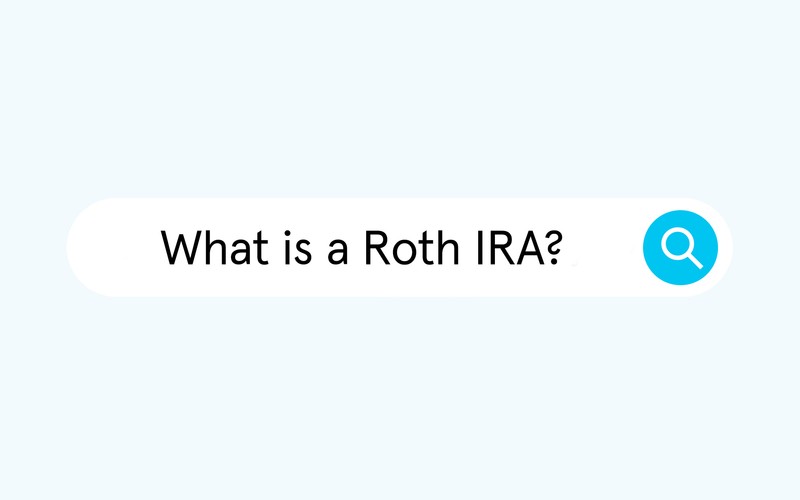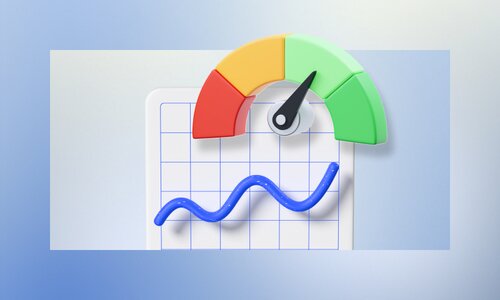Building wealth in the future requires careful planning today. Saving for retirement is one of those decisions. However, knowing that you need to save for your future is one thing; finding the right tools and vehicles for this saving is another.
Enter the Roth IRA, an individual retirement account that comes with special tax advantages. Knowing what it is, how it’s different from a traditional IRA, and the advantages of having a Roth IRA can help you build an investment strategy for your savings.
What is a Roth IRA?
A Roth IRA is an IRA, or individual retirement account, is a savings option for retirement, particularly for people who expect to be in higher tax brackets during their later years. What makes a Roth IRA appealing is the tax advantages it comes with.
Unlike traditional IRAs, which are tax-deferred earnings, a Roth IRA allows for tax-free income after the age of 59½ as long as the account has been open for at least five years. There are, however, income limitations to opening a Roth IRA, which means that not everyone will be eligible to open this type of retirement account.
If you are eligible, you contribute after-tax dollars. The contribution and the earnings on those contributions can then both grow and be withdrawn tax-free. However, note that contributions to a Roth IRA are not tax-deductible.
As with other retirement accounts, you can choose to invest your contribution in various investment vehicles. A Roth IRA will allow you to invest in specific securities such as mutual funds, stocks, bonds, exchange-traded funds (ETFs), certificates of deposit (CDs), money market funds, and cryptocurrency.
How does a Roth IRA work?
You can fund a Roth IRA from a number of different sources, such as:
- Regular contributions: Income from your job or savings account can regularly be put into your Roth IRA.
- Spousal IRA contributions: A nonworking spouse can contribute to a Spousal IRA up to the same amount as the wage earner in the family.
- Transfers: Existing pre-tax IRA accounts such as traditional IRAs, SEP IRAs, or SIMPLE IRAs can be converted to Roth IRAs.
- Rollover contributions: A rollover option can transfer employer-based retirement plans, such as 401(k) accounts to a Roth IRA.
All Roth IRA contributions must be made through cash, checks, or money orders. Securities and property cannot be transferred into a Roth IRA.
Once you’ve transferred money into your Roth IRA, you can invest it in a wide variety of investment options. These include stocks, bonds, certificates of deposit, mutual funds, and exchange-traded funds (ETFs).
If you opt for a self-directed Roth IRA, you can also invest in cryptocurrency. A self-directed IRA or an SDIRA is a Roth IRA that’s best for investors who want to manage their own investments. The IRA will allow you to hold assets such as gold, real estate investments, partnerships, tax liens, and franchise businesses.
In 2023, an individual’s maximum annual contribution to a Roth IRA is capped at $6,500. People aged 50 or older can contribute up to $7,500.
A Roth IRA can be opened through a bank, brokerage company, or a federally insured credit union. The Federal Deposit Insurance Corp. (FDIC) offers insurance protection of up to $250,000 for traditional or Roth IRA accounts.
Benefits of a Roth IRA
A ton of advantages come with opening up a Roth IRA, especially if you know you’ll have a high income or higher tax rate in your retirement years.
No required minimum distributions
There are no required minimum distributions with a Roth IRA. Required minimum distributions, or RMDs, are amounts that taxpayers must withdraw from traditional IRAs and employer-sponsored retirement plans. The Internal Revenue Service (IRS) requires owners of these types of accounts to withdraw specific amounts, starting at age 73. However, Roth IRAs are exempt from these distributions since withdrawals from this account are tax-free.
Tax advantages
One of the biggest draws of a Roth IRA is the number of tax benefits it allows. Primarily, there are three ways in which Roth IRAs are tax efficient. These include:
- Tax-free growth: Since the contributions to the Roth IRA are already taxed, there is no additional tax on this money, no matter how long it stays in the IRA. This means the original principal, including any interest, can grow tax-free.
- Tax-free withdrawals: Once you cross 59½ years of age and have held the account for more than five years, you become eligible to withdraw money, including earnings, from this account without paying any federal taxes.
- Tax-free inheritance: A Roth IRA can be passed on to your heirs and beneficiaries, who can withdraw from this account without paying income tax.
Penalty-free withdrawals for first-time homebuyers
If you and your spouse have not owned a home in the past two years, you’re considered first-time homebuyers. As first-time homebuyers, you can withdraw up to $10,000 of earnings from your Roth IRA without paying income tax or an early withdrawal penalty.
No contribution age limit
You can put money into a Roth IRA account at any age as long as you have a qualifying earned income. There are no age restrictions on contributions to this type of IRA account.
No employer-plan restrictions
If you’re on an employer-based retirement plan, such as a 401(k) or a 403(b), you can still contribute the maximum annual amount to a Roth IRA, which, for the 2023 tax year, is $6,500 for all individuals, and $7,500 if you’re 50 or older. However, you’ll need to ensure you don’t exceed the IRS’s income limits.
Who’s eligible for a Roth IRA?
To be eligible to open and contribute to a Roth IRA, you must generate an earned income. This could be in the form of an ordinary income, such as a salary, hourly wages, bonuses, tips, self-employment income, or commissions. Income that doesn’t qualify includes investment income, pension or annuity income, Social Security benefits, unemployment compensation, and alimony.
Your eligibility will also depend on how much you earn, and you may be prohibited from contributing to a Roth IRA if your taxable income exceeds a certain amount. This amount can vary depending on your tax filing status and living situation. Roth IRA contributions are made on an after-tax basis.
If you file taxes as a single person, your Modified Adjusted Gross Income (MAGI) must be under $153,000 for the tax year 2023. If you’re married and filing jointly, your MAGI must be under $228,000 for the tax year 2023.
The maximum annual contribution limit for all IRAs combined is $6,500 if you’re under 50 and $7,500 if you’re aged 50 or above.
You can also boost your contributions using the spousal Roth IRA. This allows an individual to fund a Roth IRA on behalf of a married partner who earns little or no income. Spousal Roth IRA contributions are subject to the same rules and limits as a regular Roth IRA, with a few additional conditions:
- The couple must be married and filing a joint tax return.
- The individual funding the spousal Roth IRA must have eligible compensation.
- There may be two Roth IRA accounts, but each must stay within the IRA contribution limits.
If you don’t qualify for a Roth IRA, you can contribute to a traditional IRA and then convert that account to a Roth IRA through a method called the backdoor Roth, also sometimes referred to as a Roth IRA conversion.
Roth IRA withdrawals and penalties
To access the funds in your Roth IRA, you must follow a few withdrawal and distribution rules.
- You can withdraw your original contributions to the Roth IRA whenever you want, without penalties, no matter how long your account has been open. Any time you withdraw from a Roth IRA, it is assumed that your original contributions are being withdrawn first.
- If you’re over 59½ and have held the account for at least five years, you can take distributions from the account, which includes Roth IRA income, without paying any federal taxes. These are called qualified distributions. Qualified withdrawals also include certain situations where you may withdraw money before the above conditions have been met, such as a first home purchase, education expenses, health insurance premiums when unemployed, having a baby, disability-related expenses, and more.
- Non-qualified distributions may be subject to taxes and/or a 10% penalty, depending on your age and how long you’ve held the account. Work with a qualified tax advisor or financial advisor to maximize returns from your Roth IRA.
The bottom line
To create financial freedom for your future, you should save in the present using the best investment vehicles available. A Roth IRA is one of the many tax-free options to grow your long-term investments.
At Arrived, our mission is to provide financial freedom for everybody, and we do this by allowing you to purchase shares in profitable rental properties. Through our platform, you can purchase shares of rental properties for as little as $100 and start building a portfolio—and a rental income—today.
The opinions expressed in this article are for general informational purposes only and are not intended to provide specific advice or recommendations for any individual or on any specific security or investment product. The views reflected in the commentary are subject to change at any time without notice. View Arrived’s disclaimers.








